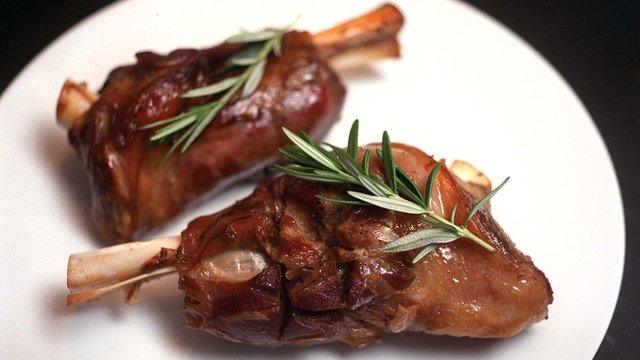What is halal meat?
- Published
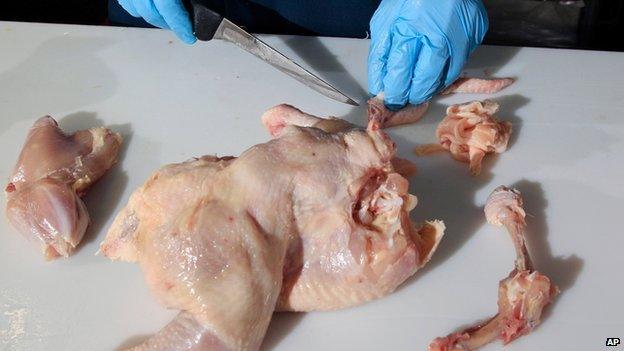
Most halal chickens are stunned, Defra says
There have been calls for clearer labelling of halal products in shops, restaurants and takeaways. But what is halal food? And why are campaigners so concerned?

What is halal meat?
Halal is Arabic for permissible. Halal food is that which adheres to Islamic law, as defined in the Koran.
The Islamic form of slaughtering animals or poultry, dhabiha, involves killing through a cut to the jugular vein, carotid artery and windpipe.
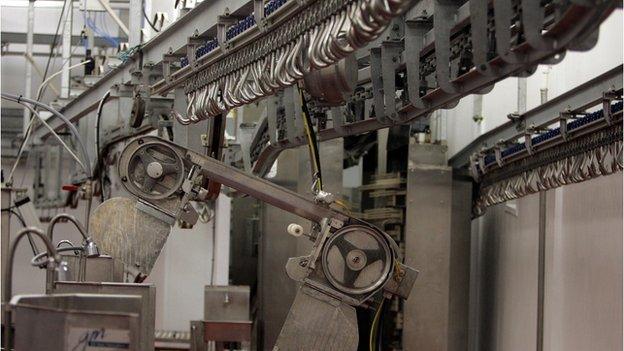
UK slaughterhouses must be completely halal compliant
Animals must be alive and healthy at the time of slaughter and all blood is drained from the carcass. During the process, a Muslim will recite a dedication, know as tasmiya or shahada.
There is debate about elements of halal, such as whether stunning is allowed.
Stunning cannot be used to kill an animal, according to the Halal Food Authority (HFA), a non-profit organisation that monitors adherence to halal principles. But it can be used if the animal survives and is then killed by halal methods, the HFA adds.

How widespread is stunning?
The RSPCA says slaughter without pre-stunning causes "unnecessary suffering".
UK Food Standards Agency figures from 2011 suggest 84% of cattle, 81% of sheep and 88% of chickens slaughtered for halal meat were stunned before they died.
Supermarkets selling halal products say they stun all animals before they are slaughtered. Tesco says the only difference between the halal meat it sells and other meat is that it was blessed as it was killed.
Stunning of livestock has been mandatory in the the EU since 1979, although member states can grant exemptions for religious slaughter.
Some countries, including Denmark, have opted to ban non-stunning slaughter altogether. The UK government says it has no intention of banning religious slaughter.

Is it different from kosher meat?
Kosher food complies with Jewish dietary law (kashrut), again governing what can and cannot be eaten by those practising the faith.
There are similarities in the method of slaughter in that both require use of a surgically sharp knife and specially-trained slaughtermen.
Jewish law strictly forbids the use of stunning and meats are not blessed in the same way.
Unlike for halal, kashrut does not require God's name to be said before every slaughter after an initial blessing.
Kashrut forbids the consumption of certain parts of the carcass, including the sciatic nerve and particular fats.
Halal also forbids consumption of some carcass parts including the testicles and bladder.

What are the rules on labelling?
Currently, there is no requirement for halal or kosher meat to be specifically labelled.

Why are retailers and restaurants selling it?
By ensuring food meets halal criteria, retailers and restaurants are making their products suitable for the UK's Muslim population.
Under HFA guidelines, slaughterhouses must be completely halal compliant.
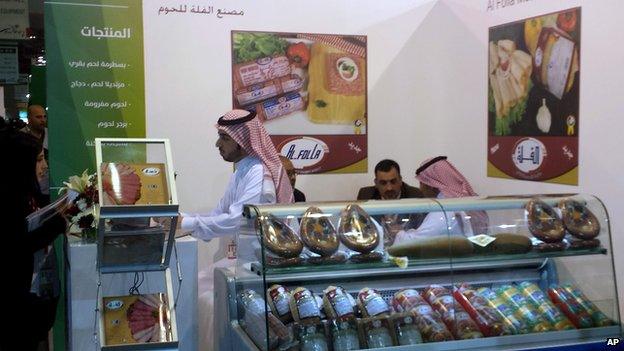
The global halal food and lifestyle industry is estimated to be worth hundreds of billions of dollars
That means they cannot have some areas that meet standards and others which do not.
The HFA says many slaughterhouses will have chosen to move to halal processes so they do not lose Muslim customers.
The latest census suggests there are 2.7 million Muslims in the UK, with a spending power estimated in the region of £20bn.

How widespread is halal in the UK?
A number of supermarkets including Marks and Spencer, Tesco, Morrisons, and the Co-op all sell halal lamb. Some Waitrose lamb products are given a Halal blessing, but are not supplied separately and are therefore not considered halal on the shelves, the chain said.
The Sun newspaper prompted a debate after running a front page, external reporting that all chicken served at Pizza Express was halal and customers were not being told.
The HFA estimates 15% of all meat slaughtered in the UK is halal compliant.

What changes are being suggested?
Campaigners and politicians are calling for clearer labelling of halal products to give consumers more information on how their food is prepared.
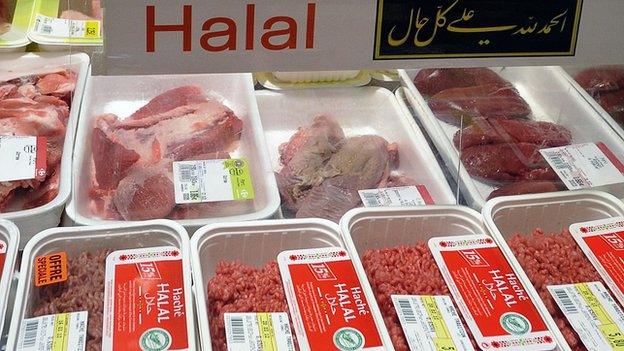
Campaigners say labelling is a matter of choice
Jewish and Muslim leaders agree, and have called for "comprehensive labelling", external of meat.
They say consumers should be told whether an animal has been stunned before being slaughtered, along with the method of slaughter.
- Published8 May 2014
